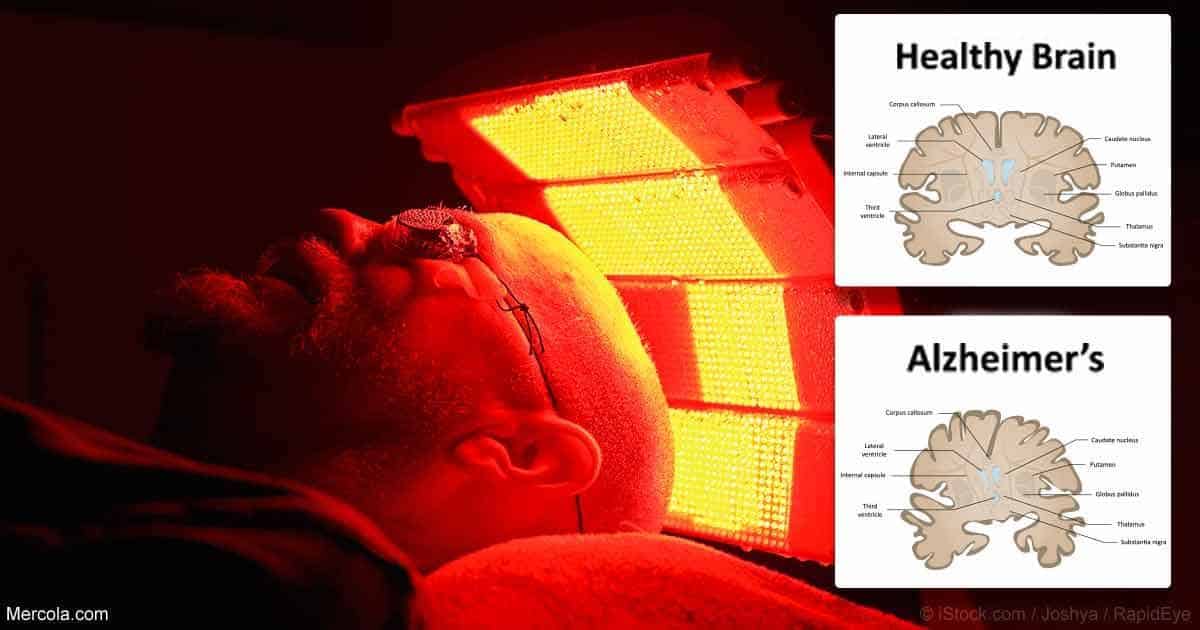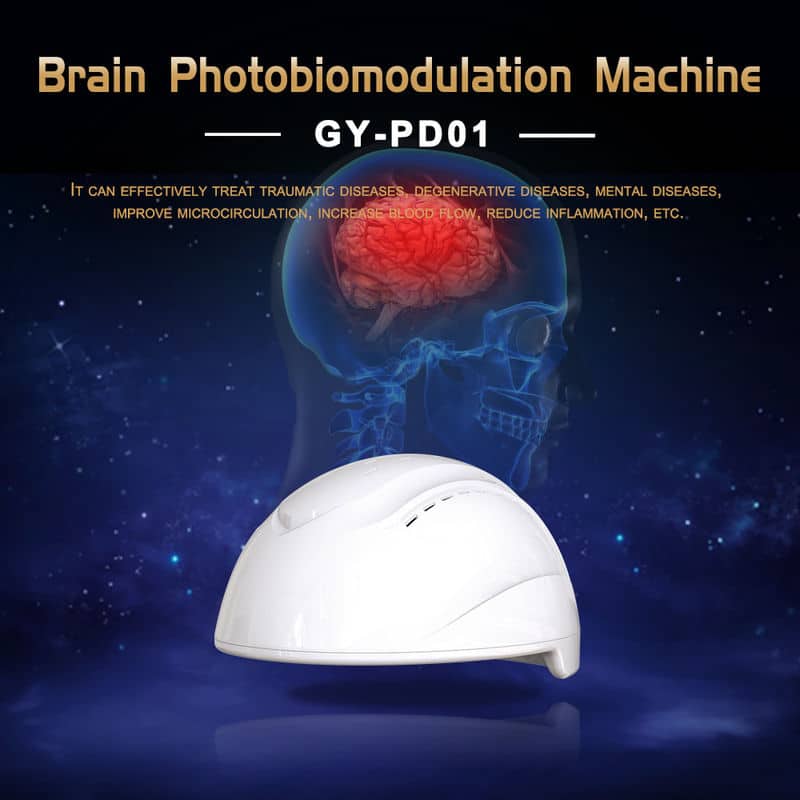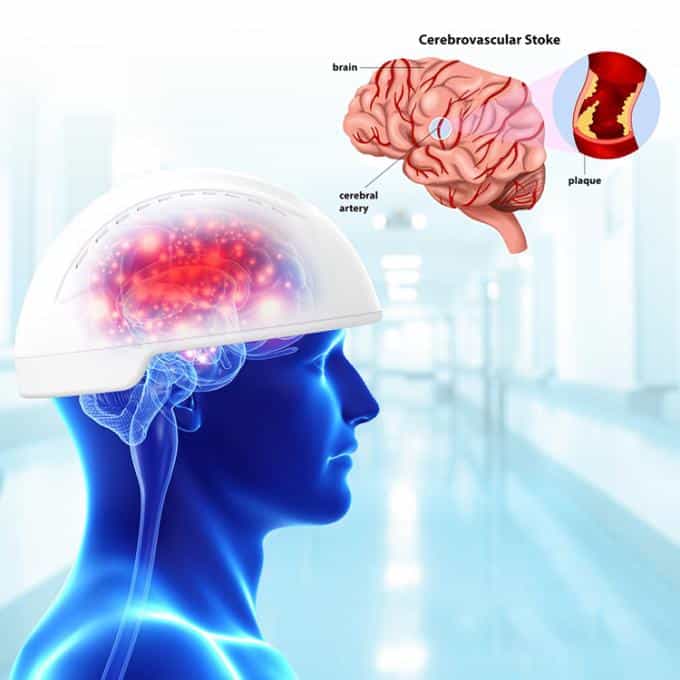Aids Daytime Sleepiness And Other Sleep Disorders
Humans rest and wake based on a daily cycle called the circadian rhythm. Both light and melatonin play a role in the regularity of the cycle. Many people with PD suffer from sleep disturbances. It is thought that NIr may play a role in improving healthy sleep patterns.3
People with Parkinson’s often experience excessive daytime sleepiness, general fatigue, nighttime sleep disturbances, and depression all of which can affect healthy sleep and the circadian rhythm. According to research reported in the February 2017 JAMA Neurology Journal, light therapy significantly reduced daytime sleepiness, improved sleep quality, decreased overnight awakenings, improved daytime alertness and activity level, and improved motor symptoms in people with Parkinson’s.6
Different kinds of light therapy have been used effectively for other sleep, psychiatric, and medical conditions for decades. NIr continues to be studied in the clinical setting in order to determine how it can best be applied in treating Parkinson’s and other medical conditions. Long-term, large scale controlled studies will help to better evaluate the efficacy of NIr as way to mitigate symptoms as well as possibly slow or limit or reverse disease progression.
Are Medicines Or Supplements No Longer Working For You
If the answer is yes to this question, what treatment options remain? There is, of course, Deep Brain Stimulation available as an option, but I am well aware many of you prefer not to pursue this treatment option. It is my hope and prayer that photobiomodulation therapy will become a natural option that supports the therapeutic effect of medicines and supplements such that the dosage does not have to be increased or even can be reduced under close supervision of your doctor.
I thus recommend that you consider this therapy so we can discover together whether my prediction of success is right or wrong. Keep in mind that while the device is relatively expensive $1749 you:
The Vielight company obviously has confidence in their product which is a very encouraging sign. I have never heard of any company that offered a 6 month warranty. You can purchase the Gamma Vielight devicefrom the Vielight website:
Be sure to enter the coupon code healing4me on the Vielight shopping cart to claim your Parkinsons Recovery 10% discount. Please also email me your experience with using it after a month of use.
How Does Light Therapy Work
Light therapy, or Photobiomodulation , is the non-thermal delivery of waves of light energy with a therapeutic benefit.At an optimal wavelength, intensity and exposure time, light aimed at human tissue sets off a series of biochemical events that can result in chronic pain relief, reduced inflammation, and even increased dopamine and serotonin production in the colon.
The PDCare Laser therapy increases gut fermentation of dietary fibre, which in turn facilitates the production of helpful gut metabolites .SCFAs are important for manufacturing the neurotransmitters dopamine and serotonin that are in short supply in a Parkinsons patient . In essence, the gut takes on an even greater load and compensates for the reduction of dopamine production in the brain.
Read Also: Is Parkinson’s An Autoimmune Disorder
Rogue Proteins Drive Neurodegenerative Disease Progression In The Brain
A hallmark of neurodegenerative disorders is the accumulation of misfolded, self-replicating proteins in the affected brain regions.
These rogue proteins cluster in toxic aggregations that damage mitochondria – the cells energy generators – and ultimately kill neurons. Image: Lashuel Lab, EPFL
As the proteins multiply, and propagate from one cell to another, the disease spreads across the brain. Image: Ekman, Ferreira & Westman
Using PBM to enhance mitochondrial function in the brain appears to trigger a cascade of biochemical reactions which counteracts the damaging effects of the rogue proteins.
The encouraging results from studies so far and parallels in protein pathology between Parkinsons disease and other neurodegenerative disorders suggest that PBM may also work as a therapy for dementia.
To investigate this hypothesis, the EPFL-Wyss Center collaboration is exploring the biological mechanisms behind the effects of PBM in Parkinsons disease, Alzheimers disease and frontotemporal dementia.
Prof. Hilal Lashuel, PhD, Director of the Lashuel Lab at EPFL Our collaboration with the Wyss Center is guided by our vision to deeply understand the mechanisms underpinning photobiomodulation and the ways to exploit them for therapeutic benefits. From the use of multiple models of Parkinsons, Alzheimers and frontotemporal dementia to careful consideration of future light delivery methods, this study is optimized for potential future translation.
Act Now Or Wait For More Evidence

If you prefer to wait for clear and convincing evidence that this or any light therapy will help with symptoms of Parkinsons disease, be on the lookout for research findings that will be completed and released 5-10 years from now. Designing and implementing studies takes time and of course big bucks. I would personally like to see many people with the symptoms start getting photobiomodulation therapy now. Early users are giving us rich indications about its usefulness as a treatment for Parkinsons symptoms,. I do not hesitate to suggest this as a treatment option to take seriously.
Also Check: Is Pot Good For Parkinson’s
Research On Light Therapy From Mit
The following video previews recent research at MIT that explains why light therapy offers a promising opportunity to reverse dementia associated with a diagnosis of Alzheimers disease.
I hope many of you will try this therapy out and let me know the result. It is not a permanent fix to be sure, but neither is medicine. I am attracted to this option because it is noninvasive and inexpensive over the long term when you consider it can be used for a lifetime and by all members of the household.
Evaluation Of Dose Rate Of Photobiomodulation Therapy In Patients With Parkinsons Disease: Double Blind Placebo
J. Bullock-Saxton, L. Laakso, A. Lehn, F. Read, K. Harm, A. Gosling, S. Hardy, P. Newcombe, A. Nolan, E. Tune
Session Time: 1:45pm-3:15pm
Location: Agora 3 West, Level 3
Objective: This assessor- and participant-blinded placebo-controlled pilot study aimed to evaluate the influence on motor outcomes associated with Parkinsons Disease with different dose application regimens of PBMt.
Background: Parkinsons disease is the second most common progressive neurodegenerative disorder with movement decline and non-motor symptoms such as cognitive effects and sleep disturbance. PD is not curable and the cause is not clear. One hypothesis is that PD develops because of mitochondrial dysfunction. Photobiomodulation therapy stimulates mitochondrial action by absorption of photons in specific transmembrane proteins , resulting in a range of physiological effects that may be beneficial to cerebral function.
Results: Upper limb tests of 9 Hole Peg test and timed Spiral tests demonstrated significant improvement with PBMt. Dynamic balance tests improved for the treatment group that had 3/wkly PBMt followed by 1/wkly PBMt.
PBMt influenced some aspects of upper and lower limb motor function, particularly when administered at a more frequent rate of application initially followed by a reduction in dosing.
To cite this abstract in AMA style:
Mov Disord.
Recommended Reading: What Foods To Avoid With Parkinson’s Disease
How Long Does It Take Photobiomodulation To Work
The answer to this question is not straightforward. Depending on your chief complaint and its location, the number of sessions will vary.
Whats sure, however, is that you need more than a single session to experience pain relief. According to reports, it may take up to 30 sessions before photobiomodulation takes full effect. Note that you will start experiencing pain relief after the very first few sessions. Additionally, the number of therapeutic sessions per week varies from one patient to another.
In summary, the number of sessions depends on these factors:
- The nature of your condition
- Severity of symptoms
- Response to photobiomodulation therapy
Is Photobiomodulation Fda
Note that the process of getting approved by the FDA is very strict and requires tons of scientific research and years of scrutiny. Just consider the COVID vaccine. It basically saved millions of lives, but it took the FDA such a long time to approve it. The first approval was not even complete The Pfizer vaccine received partial approval.
The point is: the fact that photobiomodulation is approved by the FDA goes to show that this treatment modality is quite effective and safe at the same time.
Read Also: What Causes Drooling In Parkinson’s Patients
Is It Available To Me
There are infrared light sources on the market that you can buy in a specialty store or on the internet. These however, are not the same as the light sources that are used in a clinical study environment. They may or may not prove helpful to people with Parkinson’s suffering from sleep disturbances, and should only be used after seeking input from your physician.
Early Evidence On Vielights Photobiomodulation Device As A Treatment For Parkinsons Symptoms
As a brand new invention. there is no systematic published research on the use of the Vielight Gamma Photobiomoduatlion device as a therapy to specifically address Parkinsons symptoms. I have heard informal feedback from users that the therapy has resulted in relief of some symptoms and report below my summary observations:
You May Like: Can You Be Born With Parkinson’s Disease
Ethics Approval And Consent To Participate
The study received human research ethics approval by the Griffith University Human Research Ethics Committee . All participants gave written informed consent prior to taking part in the study. All protocols were approved by the Griffith University Human Research Ethics Committee and were conducted in accordance with their regulations and guidelines.
Consent for publication.
Not applicable.
Remote Photobiomodulation Treatment For The Clinical Signs Of Parkinson’s Disease: A Case Series Conducted During Lockdown

New Research published in the Photobiomodulation, Photomedicine and Laser Surgery Journal discusses results of an at home trial of SYMBYX Laser devices on participants living with Parkinson’s disease. The trial commenced in August 2019 and was based in Sydney, Australia. Lead researcher was Dr Ann Liebert, a Co-Founder of SYMBYX.
Application of light therapy on the gut and back of neck was again shown to be an effective treatment for a number of clinical signs of Parkinsons, with some improvements being maintained for 45 weeks, despite Covid lockdown restrictions. Participants were assessed for mobility, balance, cognition, fine motor skill and sense of smell on enrolment and again at 12 weeks and after 33 weeks of home treatment. Improvements were similar to those seen in a previous study based in Adelaide which applied light therapy to the gut, back of neck AND the head.
Read Also: Parkinson Disease And Anger Outbursts
Will Photobiomodulation Therapy Interfere With My Daily Life
No. You are welcome to receive the therapy while working, reading or doing anything really. Dr. Lim, the inventor, recommends that people with more serious health issues such as Alzheimers might be advised to do the therapy at night while going to sleep. The treatment duration lasts only 20 minutes.
The Light Treatments Available Now
Those already suffering with Parkinsons dont need to wait for the trial results, as there are light therapy products from SYMBYX already available on the market.
It is legal and regulated and its available for purchase, Dr Wayne Markman, CEO of SYMBYX an Australian medical technology company told 7NEWS.
Recommended Reading: How Can You Diagnose Parkinson Disease
What Parkinson’s Takes Away
Parkinsons is both a neurological and movement disorder which occurs when brain cells producing dopamine slowly begin to die off.When dopamine levels get too low, neurons start to fire more randomly, leading to the classic symptoms of Parkinsons tremour, rigidity and/or stiff muscles, slowness of movement and unstable posture.Additionally, patients may experience problems sleeping, decreased sense of smell, depression or anxiety and problems with more typical brain functions such as planning, making decisions or paying attention.
What Are The Side Effects Of Photobiomodulation Therapy
While every therapy out there has some side effects, photobiomodulation is generally very safe. The worst thing it can do is a skin rash when the laser is not used appropriately.
Those are the side effects on the skin. If you get photobiomodulation near your eyes, however, you will need to wear protective glasses. Even though the lights from this therapy are safer on the eyes compared to other lasers, you still need to protect your eyes.
Don’t Miss: Can Diabetes Cause Parkinson’s Disease
The Potential Of Light Therapy In Parkinson’s Disease
Accepted for publication 10 December 2013
18 February 2014Volume 2014:4Pages 114
Introduction
The current gold standard treatments for Parkinsons disease are very effective at attenuating the motor signs, at least initially. However, they do not reliably slow the progression of the disease neurons continue to die during the course of treatment. The discovery of new therapeutic approaches that offer neuroprotection against parkinsonian insult is therefore paramount. In this context, several recent studies in animal models of Parkinsons disease, as well as other models of disease , have reported that red to infrared light therapy can be neuroprotective. There is real potential for the development of light therapy as a treatment option for Parkinsons disease patients one that slows the ongoing neuronal death and progression of the disease.
Overview of Parkinsons disease
Current therapies for Parkinsons disease
Dopamine drug therapy
In general, these drug treatments have very good early symptomatic effects, but their longer-term neuroprotective or disease modifying effects are far from clear. For example, although drugs such as selegiline and rasagiline have been tested as putative neuroprotective agents in clinical trials, their ability to actually stop neuronal death and slow the pathology of the disease has yet to be demonstrated.26
Surgical treatment
Putative neuroprotective treatments
What is light therapy and how does it offer neuroprotection?
Cell survival
Near Infrared Chronic Intracranial Illumination For Neuroprotection In Parkinson’s Disease
Objective/Rationale: The treatment of Parkinsons Disease is based on medication and on surgical procedures. These therapies alleviate symptoms but do not change the evolution of the disease, which is a progressive degeneration of the neurons producing dopamine in the brain. This degeneration is in part due to an abnormal functioning of the mitochondrias that produce energy in these neurons. There is evidence that infrared light can counteract this mitochondrial dysfunction.
Project Description: We will develop a prototype to deliver continuously into patients brains infrared light to slow down the loss of these dopaminergic neurons by improving their mitochondrial function. Human application requires checking the safety of the invented devices in laboratory pre-clinical models. An implantable prototype is being assembled from parts already made by industrial companies for deep brain stimulation. It will be implanted in models to check the safety of the surgical procedure and the long term tolerance of this device. The proof of principle of the therapeutic effect also has to be made. We will implant the device in models rendered parkinsonian by administration of the neurotoxin MPTP and observe the evolution of this parkinsonian syndrome under the effect of this intracranial illumination.
Also Check: Can You Test For Parkinson’s Disease
Additional File : Supplementary Table 1
Parameters of the photobiomodulation devices and treatment used in the study. Supplementary Table 2. Mean of measures of fine motor control, mobility, balance and cognition before PBM treatment in a second study of PD treatment with PBM. Supplementary Table 3. Individual data for participants before and after treatment with the photobiomodulation protocols.
Mitochondrial Dysfunction And Parkinsons Diseasenear

- 1Department of Physiology, National University of Singapore, Singapore, Singapore
- 2Division of Neurosurgery, Department of Surgery, University Surgical Cluster, National University Hospital, Singapore, Singapore
- 3Lee Kong Chian School of Medicine, Nanyang Technological University, Singapore, Singapore
- 4Department of Research, National Neuroscience Institute, Singapore, Singapore
Recommended Reading: How Does Levodopa Help Parkinson’s
What Is Photobiomodulation Therapy
When the mitochondria absorb the photons emitted by photobiomodulation, several changes occur in the cell, including the activation of certain signaling pathways, the upregulation of transcription factors, and the expression of protective genes.
Scientists explored the potential role of brain photobiomodulation in the treatment of anxiety, depression, chronic pain, and other mental disorders. So far, the preliminary results are very promising.
New Treatment For Parkinsons Disease
A new treatment for life-robbing Parkinsons disease is set to be trialled in Sydney following reports of good results using light therapy.
Results from a previous light therapy trial in Adelaide published in the BMC Neurology journal, showed enhanced senses and improved cognition, mood and sleep, mobility, balance, and fine motor skills among patients.
Watch the video above to find out how the new life-changing technology uses waves of light to treat Parkinsons sufferer Margaret Jarrett
For more Health & Wellbeing related news and videos check out Health & Wellbeing> >
The SYMBYX trial conducted with Parkinsons SA, used the light therapy known as photobiomodulation on two small groups of patients, all diagnosed with Parkinsons disease.
The study reported no adverse side effects and that the therapy was a safe and potentially effective treatment.
Parkinsons disease is an incurable, progressive neurological illness affecting between 10 and 15 million people worldwide.
Its the worlds fastest growing neurological disease, with symptoms including tremors, muscle rigidity, difficulty walking and swallowing, loss of smell, depression and anxiety.
Caused by a lack of dopamine, a chemical produced by both the brain and the gut to help promote and control body movement, the light therapy treatments work by stimulating dopamine production in the gut.
I dont know how its happening, but its happening and thats all I care about, she said.
Read Also: Who Can Diagnose Parkinson’s
